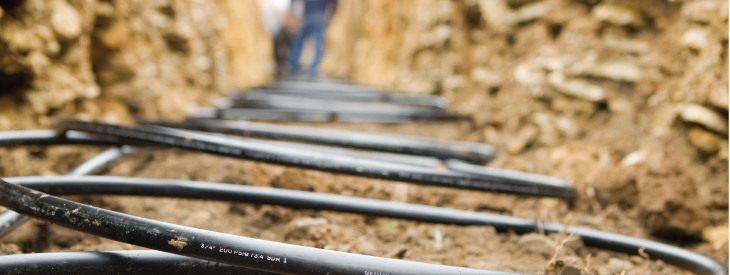
Congress recently reinstated geothermal tax credits for residential and commercial geothermal heating and cooling systems. They provide a 30 percent tax savings for residential installations and a 10 percent commercial tax credit. And homeowners who installed a geothermal system in 2017 can still claim the 30 percent credit.
Similar to ordinary heat pumps, geothermal heat pumps use the ground (instead of outside air) to provide heating, air conditioning, and hot water. Because it uses the earth’s natural heat, this technology is one of the most efficient heating and cooling options available.
Federal Geothermal Tax Credits
The Bipartisan Budget Act of 2018 reinstated tax credits for fuel cells, small wind and geothermal heat pumps. Taxpayers can claim a credit of 30 percent of qualified expenditures for a system located in the United States.
These expenditures include labor costs for on-site preparation, assembly or original system installation, and the piping or wiring to interconnect a system to the home. If the federal tax credit exceeds tax liability, the excess amount may be carried forward to the succeeding taxable year.
Here is the maximum allowable credit, equipment requirements and other details for geothermal heat pumps:
- 30% for systems placed in service by 12/31/2019
- 26% for systems placed in service after 12/31/2019 and before 01/01/2021
- 22% for systems placed in service after 12/31/2020 and before 01/01/2022
- There is no maximum credit for systems placed in service after 2008.
- Systems must be placed in service on or after January 1, 2008, and on or before December 31, 2021.
- The geothermal heat pump must meet federal Energy Star criteria.
- The home served by the system does not have to be the taxpayer’s principal residence.
State Geothermal Tax Credits
In addition to the federal tax credit, many states offer additional tax credits for installing geothermal systems. Local utilities offer rebates for many energy-saving technologies. Ask your contractor about available incentives and rebates.
For example, a $26,000 system in New York would qualify for a $6,000 state rebate. Plus, the federal tax credit would drop the cost enough to make it competitive with traditional heating and cooling.
Increased Efficiency
Because a portion of the energy used in buildings and homes is related to the thermal loads of heating, cooling, and water heating, one of the drawbacks of standard air conditioning is that the system meets limitations as the outdoor temperature reaches extremes. This is most common with a standard heat pump system in winter. As the outdoor temperature drops below 25°F, it reduces the heat pump’s ability to return air to the system at the proper temperature.
A geothermal unit avoids this scenario by using the natural heat in the ground, which is much better at retaining a consistent temperature. In fact, the EPA ENERGY STAR program has identified geothermal as one of the most energy-efficient technologies available.


